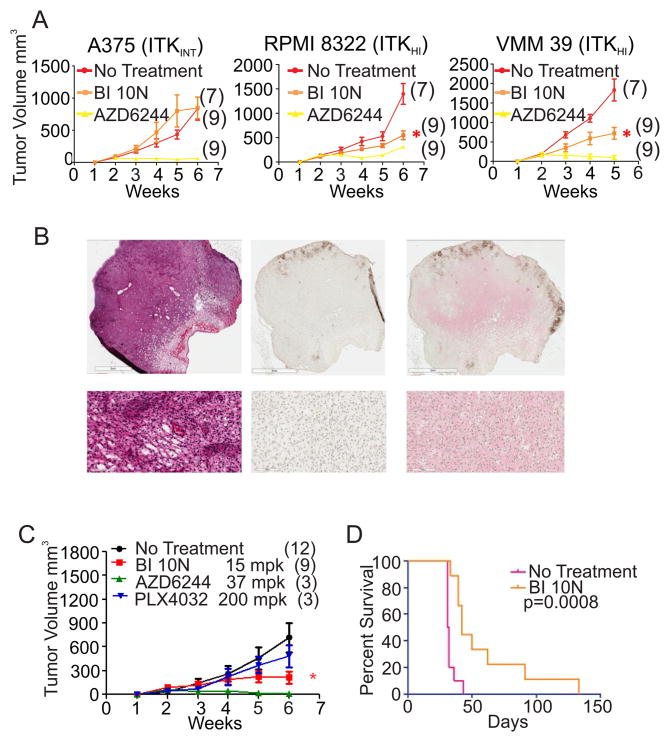Figure 4.
Effects of BI 10N on tumor growth in vivo. (A) Effects of BI 10N (15mpk) on the growth of human melanoma xenografts (mean and standard error of mean). Asterisks indicate significant tumor growth inhibition by BI 10N-treatment compared to untreated mice (P < 0.05, Bonferroni corrected). AZD6244 (37 mpk), an active agent against melanoma, is shown for comparison. Samples sizes are indicated in parentheses. (B) Representative sections from an untreated melanoma tumor tissue that was induced within the CRE-ERT2 B-RafL/+PtenL/L genetically engineered mouse model (GEMM). The left panel is stained with H&E, The center panel is stained with the biotin linked secondary antibody, while the right panel is stained both with antibodies against total ITK (red) and biotin linked secondary antibody then counterstained with hematoxylin. The lower panels are magnified areas of each of these images. (C) Effect of BI 10N on tumor growth (mean and standard error of mean) in the PTEN/BRAF GEMM. Asterisks indicate significant tumor growth inhibition of BI 10N-treated compared to untreated mice (P < 0.05, Bonferonni corrected). The effects of AZD6244 and PLX4032 on tumor growth are also shown. The activity of PLX4032 shown in C is typical for the GEMM model. Samples sizes are indicated in parentheses. (D) Melanoma bearing mice survive longer when orally dosed with 15 milligrams/kilogram BI 10N. According to the protocol governing the use of mice, the animals have to be sacrificed when the tumors reach a specific size. Of the 9 BI 10N treated animals, 7 were culled due to a multiple masses developing at the end of therapy while the primaries were still responding or had not reached a terminal burden. 1 animal had a primary that achieved a complete response and was culled at 133 days due to age and IACUC time limits. 1 animal was culled due to a progressing primary with no secondary mass.

